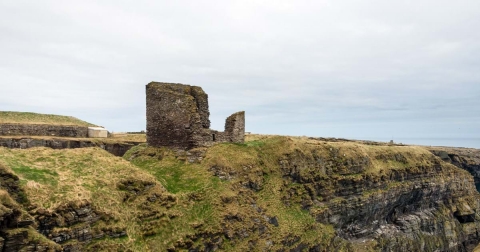Scotland: Fragment of Timber Could Reveal History of Castle of Old Wick

The Castle of Old Wick is a ruined castle that stands on a narrow promontory above the North Sea near the town of Wick, Caithness, Scotland (Scottish Gaelic: Inbhir Ùige, Gallaibh, Alba). It is thought that a fortress was built here by Earl Harald Maddadson in the 1100s, although the ruins that can be seen today probably date to the 14th century. Harald Maddadsson (Old Norse: Haraldr Maddaðarson, Gaelic: Aralt mac Mataid) (c. 1134 – 1206) was Earl of Orkney and Mormaer of Caithness from 1139 until 1206.
The remains of a four-storey tower dominates the castle complex. Part of the seaward portion of the castle collapsed into the sea many years ago. Now Historic Environment Scotland (Scottish Gaelic: Àrainneachd Eachdraidheil Alba) are seeking to discover more of the history of the castle by a single piece of surviving timber used in its construction. The Castle of Old Wick sometimes referred to as ‘The Old Man of Wick’ is believed to be one of the earliest stone-built castles in Scotland.
The plan is to have a fragment of oak taken from a stone joist socket on the castle's upper floor and then sent to Edinburgh (Scottish Gaelic: Dùn Èideann) for examination. It is hoped dendrochronological analysis, which is the study of the growth rings of trees in relation to time, can be undertaken. It is also possible that samples of the wood can be radiocarbon dated. Until now it has been difficult to ascribe a definite date to the remains of the castle and much of what is known of its 12th century origins are passed down through legend.
Link and Image: Historic Environment Scotland - Àrainneachd Eachdraidheil Alba and image courtesy of HES.





